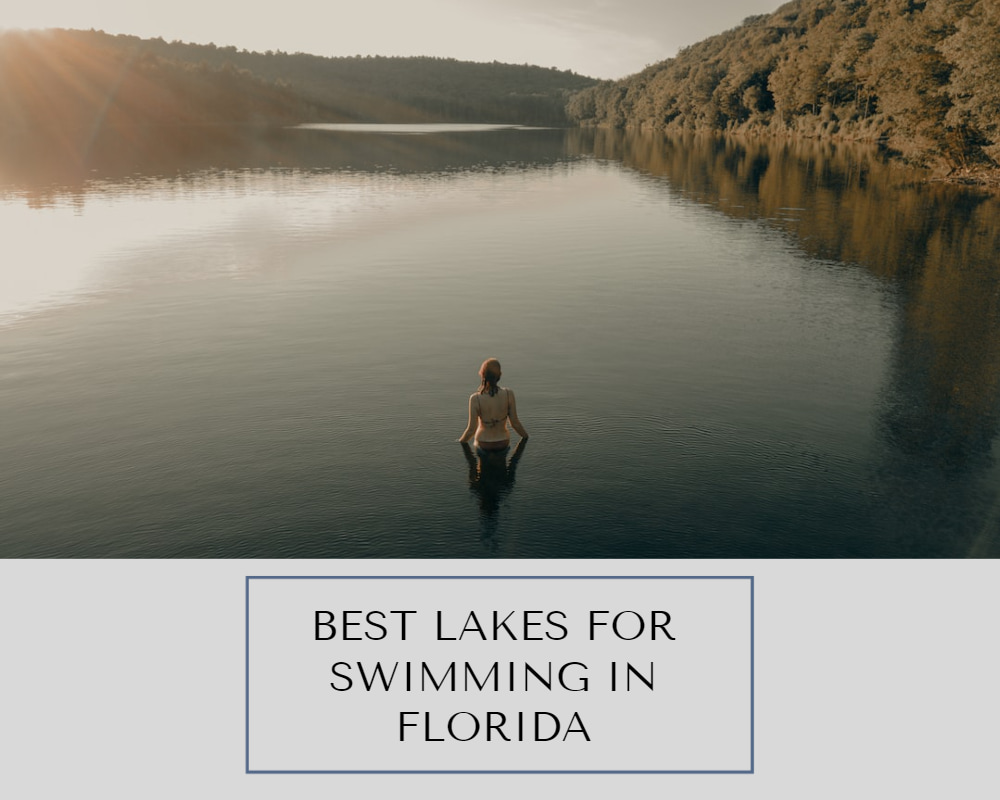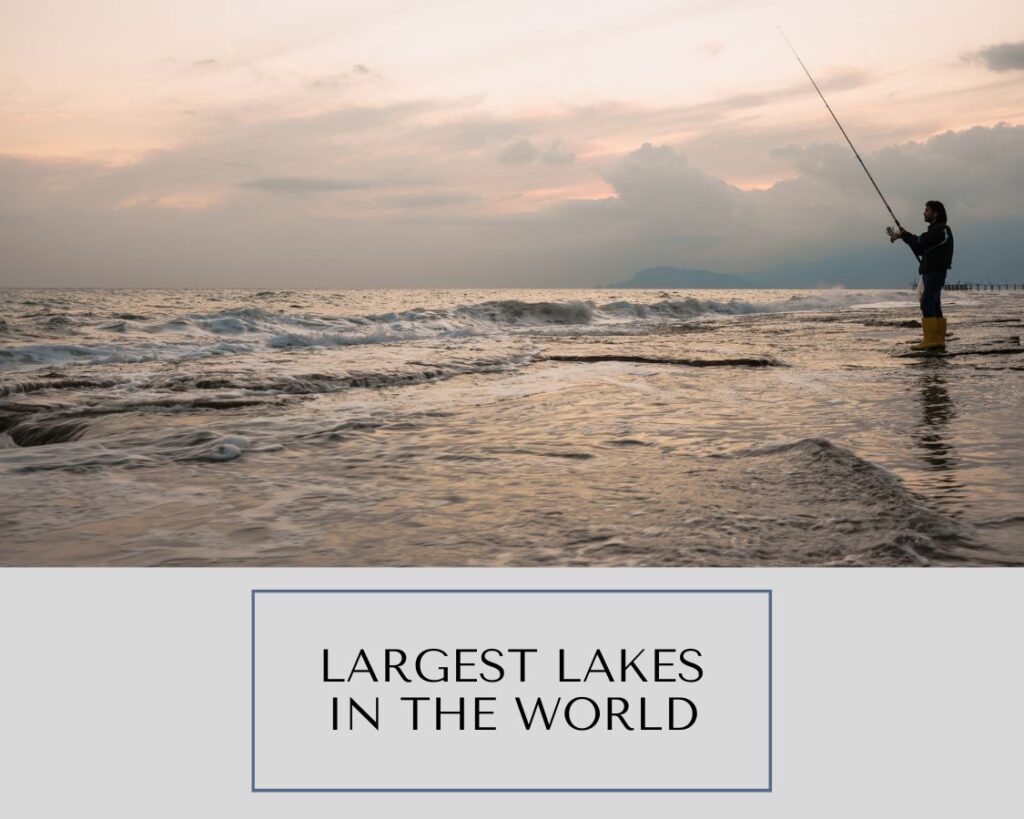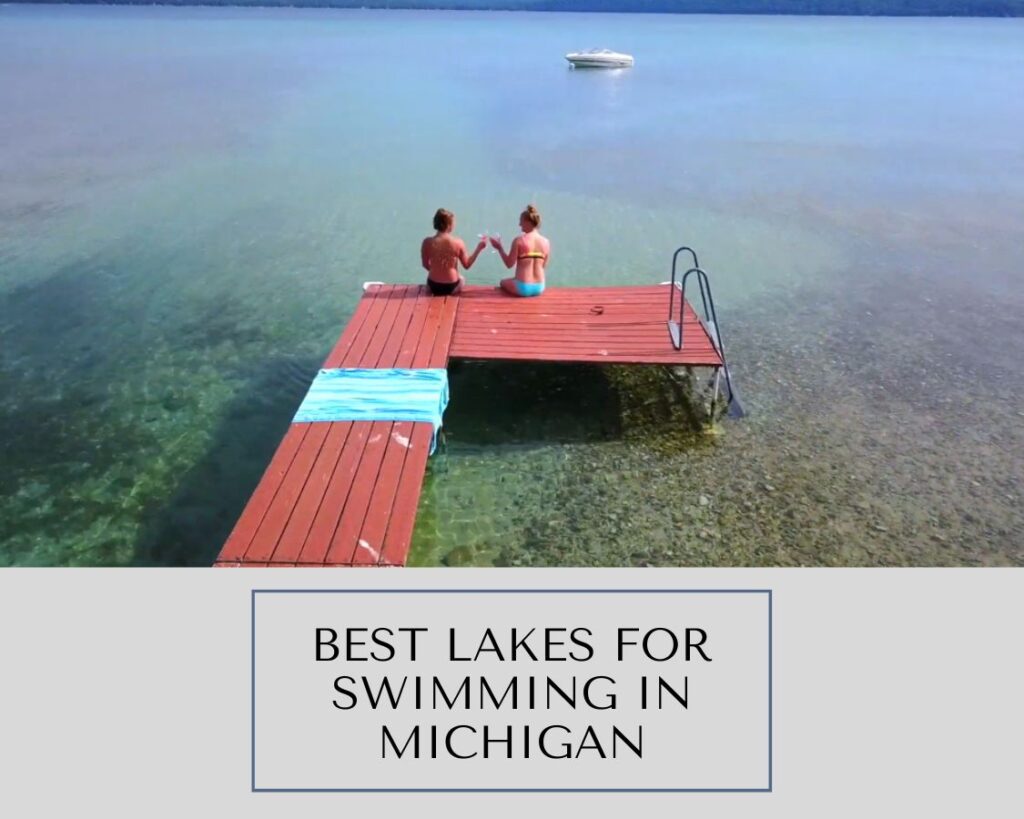Florida, with its abundant sunshine and inviting climate, is home to a magnificent array of freshwater lakes, each harboring its own charm for those who love to take a plunge beyond the ocean waves.
For enthusiasts looking to bask in waters ensconced by nature, here’s a guide to some of the most delightful lake-based retreats Florida has to offer.
The lakes we will talk about are:
- Lake Okeechobee
- Lake George
- Lake Kissimmee
- Lake Apopka
- Lake Harris
- Lake Seminole
- Lake Istokpoga
1. Lake Okeechobee
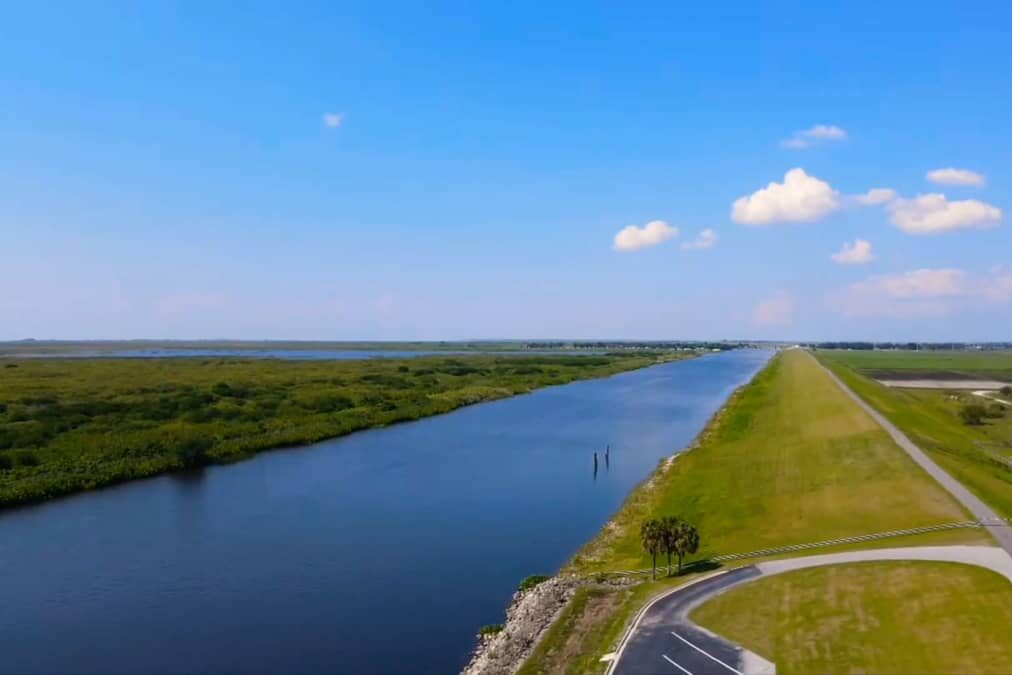
Description of the Lake: Lake Okeechobee, known affectionately as ‘The Big O,’ is a giant among Florida’s lakes. As the largest freshwater lake in the state and the second-largest natural freshwater lake wholly within the continental United States, it spans an impressive 730 square miles.
Its massive presence serves as a crossroads for central Florida’s water flow and is critical for irrigation and flood control, as well as being a vital habitat for a myriad of wildlife.
Swimming Conditions: The lake’s vast size can affect conditions for swimming, with open waters that require respect for safety.
Swimming is enjoyed in designated areas, where gentle waves lap against the shores and provide a spacious environment for a leisurely swim or cooling off on a warm Florida day.
Other Activities: Apart from swimming, Lake Okeechobee is a hub for fishing—primarily known for its abundance of bass—aquatic sports, and bird watching.
The Lake Okeechobee Scenic Trail offers spectacular hiking and cycling opportunities, with panoramic views of the lake.
How to Get There: Nestled in southeastern Florida, Lake Okeechobee is conveniently accessed from nearby towns such as Okeechobee and Clewiston. Major highways such as US-441 and State Road 78 offer direct routes leading to the lake, which is signposted from these roads.
2. Lake George
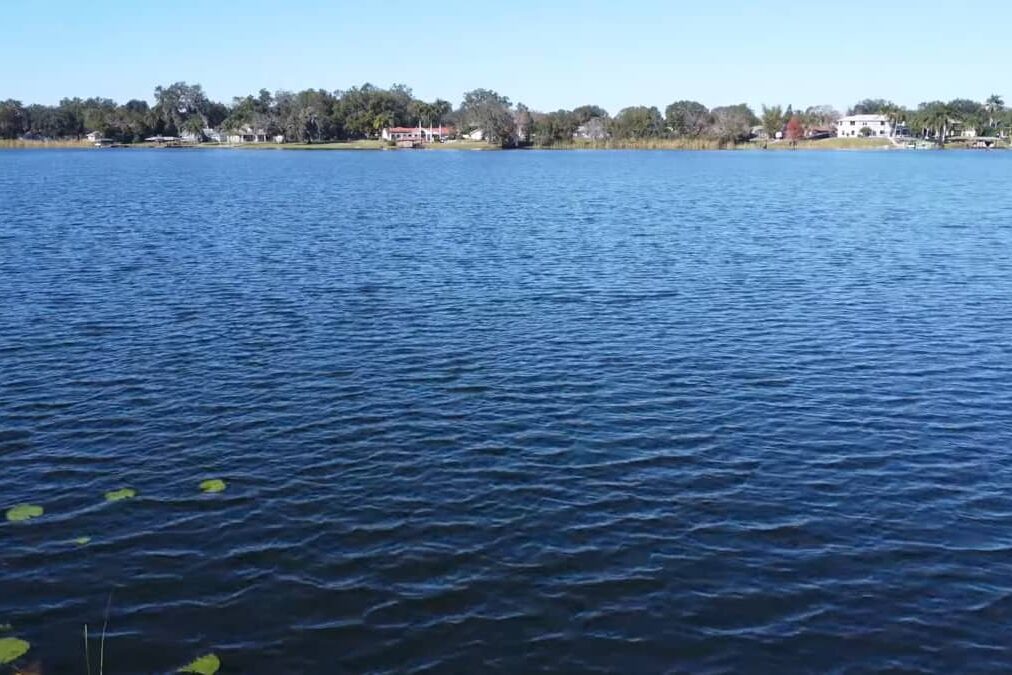
Description of the Lake: Lake George is Florida’s second-largest lake by surface area and is a serene expanse of water nestled within the St. Johns River’s embrace.
Its waters, enriched by the contributions of multiple springs, including the magnificent Silver Glen Springs, are rich in history and biodiversity.
Swimming Conditions: Lake George’s spring-fed waters offer swimmers a refreshing reprieve from heat, with consistently cool and inviting temperatures. Its broad expanse allows swimmers to find their own space in the waters, free from the crowds of more frequented destinations.
Other Activities: Boating and fishing are premiere activities here, with the lake’s clean waters hosting a variety of fish species.
Nearby trails offer scenic walks through Florida’s diverse ecosystems, and visitors can enjoy looking out for the area’s rich birdlife.
How to Get There: Lying comfortably to the north of the Deland area, Lake George is easily accessible via US-17.
The town of Astor near the northern part of the lake offers a convenient entrance, with places to launch boats and enjoy lakeside amenities.
3. Lake Kissimmee
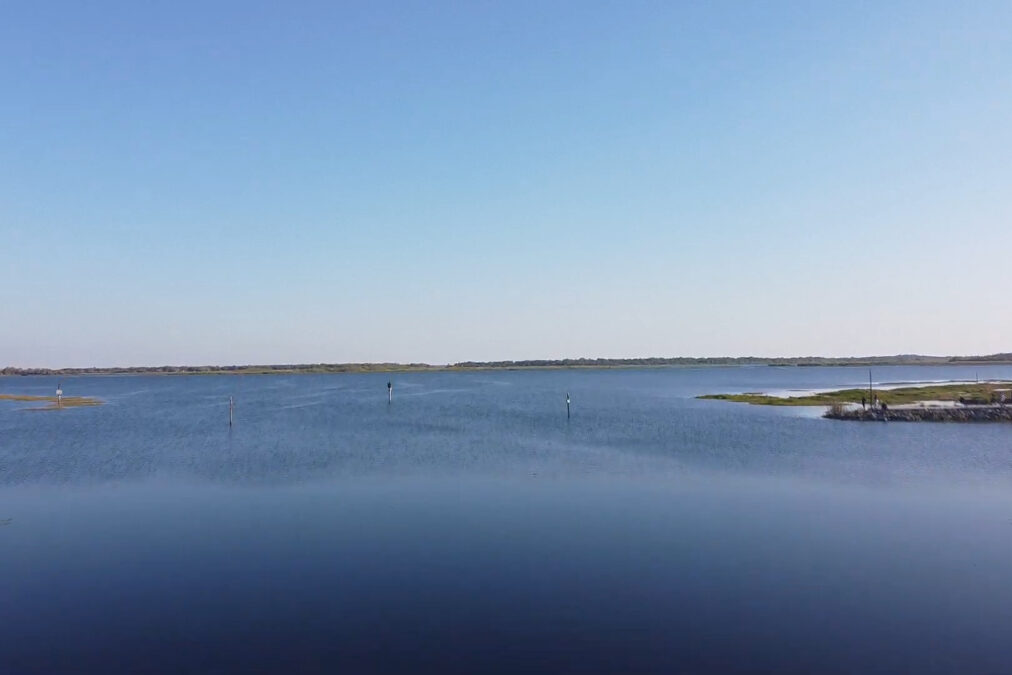
Description of the Lake: The Lake Kissimmee is Central Florida’s third-largest lake, winding through the region’s landscapes with a gentle flow.
This lake is enveloped by Lake Kissimmee State Park’s lush habitat, an area rich with Florida wildlife and the rhythms of nature.
Swimming Conditions: With designated swimming areas set up to welcome those looking to enjoy the water, Lake Kissimmee offers a safe and picturesque swimming experience. Its pristine waters make for perfect conditions to beat the Florida heat.
Other Activities: The lake is a paradise for anglers and those seeking the tranquility of canoeing or kayaking. Nature trails offer up-close encounters with Florida’s wildlife, including deer, wild turkeys, and the state’s iconic alligators.
How to Get There: Lake Kissimmee is easily approachable via State Road 60, which runs east-west through central Florida.
Guided by a combination of clear signage and maps, visitors will find the journey to Lake Kissimmee an integral part of the tranquil experience the area offers.
4. Lake Apopka
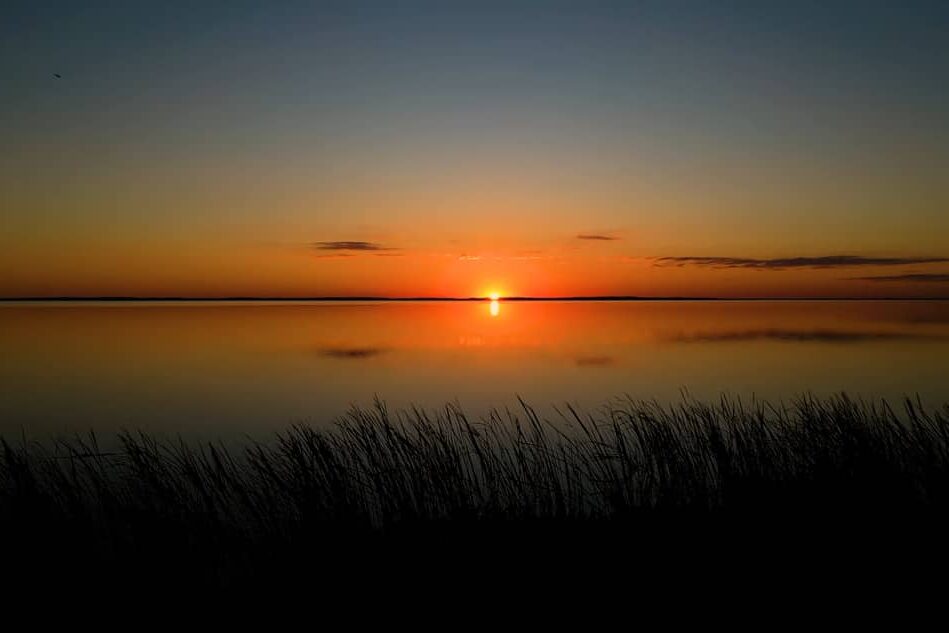
Description of the Lake: Lake Apopka is Florida’s fourth-largest lake, sprawling across northwest Orange County and into southeast Lake County. It is one of Florida’s most storied lakes, with a complex history of environmental strife and triumph.
Once burdened with the title of Florida’s most polluted large lake, significant efforts have been made to restore its natural glory.
Swimming Conditions: Swimming in Lake Apopka is typically not recommended due to its historical pollution issues. Past agricultural runoff led to eutrophication, diminishing water clarity and contributing to potential health risks. However, restoration efforts continue to improve the lake’s ecosystem.
Other Activities: Lake Apopka has been transformed into a conservation success story and has become a haven for bird watchers and nature lovers. With 377 documented bird species, the Lake Apopka North Shore offers exceptional birding opportunities.
Fishing also continues to be an attraction, with concerted efforts to revitalize its fish populations. The area is rich with nature drives, trails, and opportunities to engage with Florida’s diverse ecosystems.
How to Get There: The lake is easily accessible and is located just 15 miles northwest of Orlando. You can reach this natural beauty by heading south on U.S. 441 south of Zellwood and then turning right on CR 437 in Plymouth.
Several entry points around the lake offer access to its various trails and parks, like the Lake Apopka Wildlife Drive, which provides a self-guided driving tour of the conservation area.
5. Lake Harris
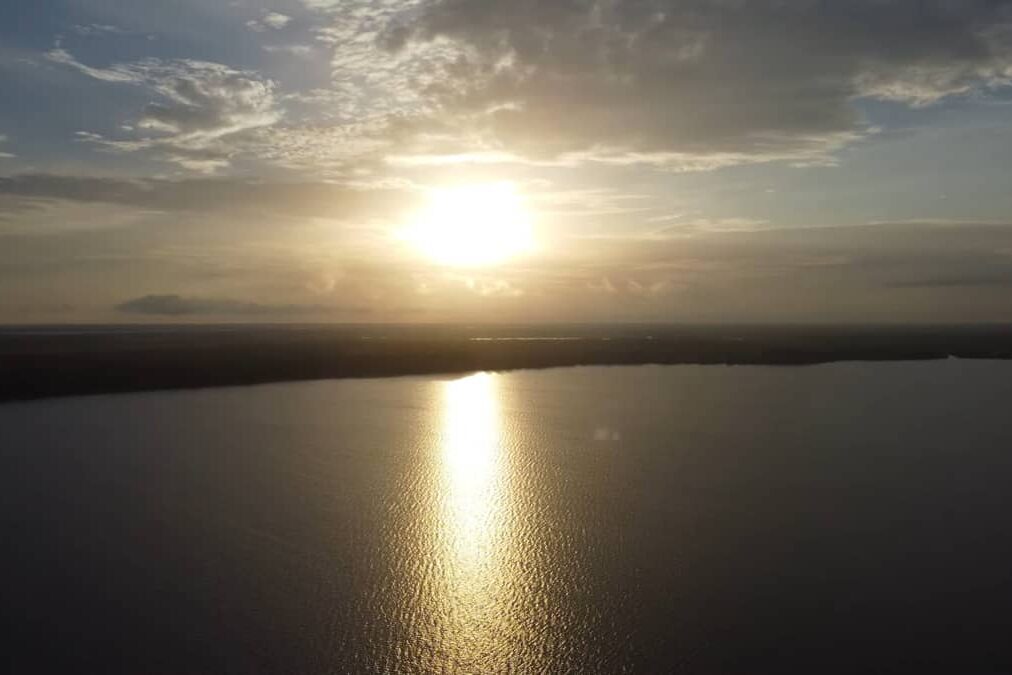
Description of the Lake: Lake Harris, set in Lake County, Florida, is part of the Upper Ocklawaha River Basin, a series of lakes connected by charming waterways. It’s named after a Floridian cattle kingpin and is renowned for its clear waters and abundant wildlife.
Swimming Conditions: With clear, fresh waters, Lake Harris provides a lovely setting for swimming. However, as is the case with many Florida lakes, it’s crucial to verify the current conditions and any advisories regarding water quality or aquatic life activity before making a splash.
Other Activities: The lake is popular for a host of water sports, including boating and fishing. Around the lake, you’ll find facilities that offer rental services for various watercraft, allowing visitors to fully indulge in the lake’s scenic surroundings.
How to Get There: Lake Harris is located in the vicinity of Leesburg and Tavares, central Florida. It can be directly accessed from Routes such as Hwy 27/441 and State Road 19, leading you into the heart of Lake County’s beautiful lake region.
6. Lake Seminole
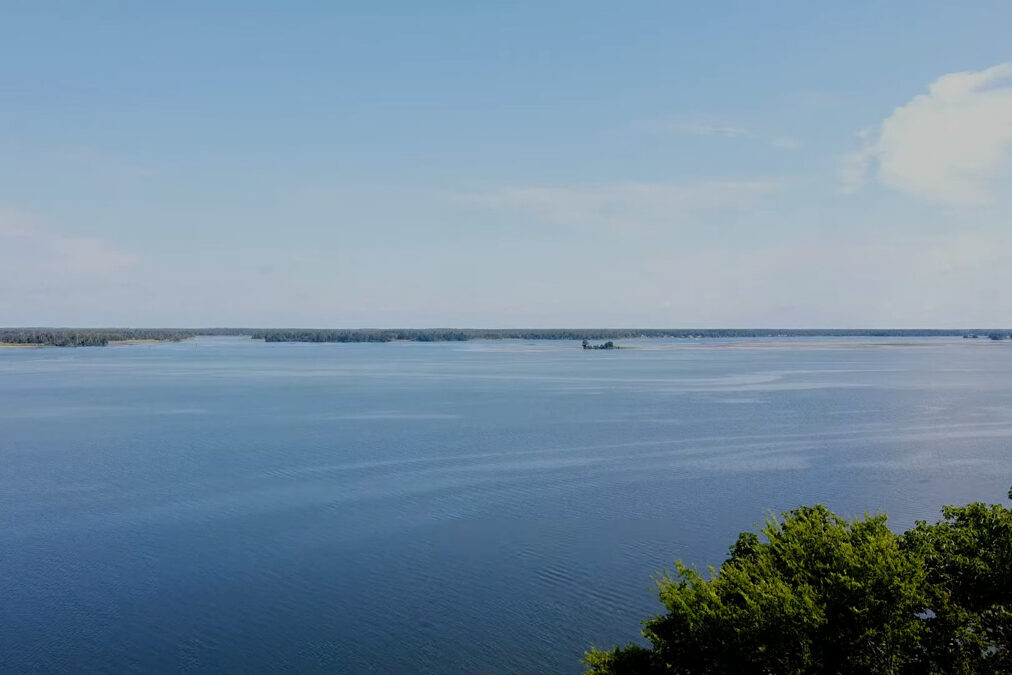
Description of the Lake: Lake Seminole is a reservoir located in the southwestern corner of Georgia, bordering Florida. It is a product of the damming of the Chattahoochee and Flint rivers, resulting in a substantial body of water that spans 37,500 acres.
Swimming Conditions: Swimming in Lake Seminole is pleasant, with generally warm water temperatures suitable for most of the year.
However, given that it is a sizeable reservoir with boat traffic and fishing activities, swimmers should be mindful of designated swimming areas and local advisories to ensure safety.
Other Activities: Lake Seminole offers a wide range of activities besides swimming. It is a popular fishing destination known for bass fishing and hosts several tournaments yearly.
Boating is also common, with multiple boat ramps providing access to the water. The lake’s surrounding area is lush with wildlife, making it perfect for nature walks, bird watching, and photography.
How to Get There: The lake is approximately 40 miles southwest of Bainbridge, Georgia. To get there, travelers can take U.S. Highway 27 to Bainbridge and then follow the signs directing towards the lake.
From the Florida side, visitors may head towards Chattahoochee, Florida, and similarly follow signage leading to recreational areas by the reservoir.
7. Lake Istokpoga
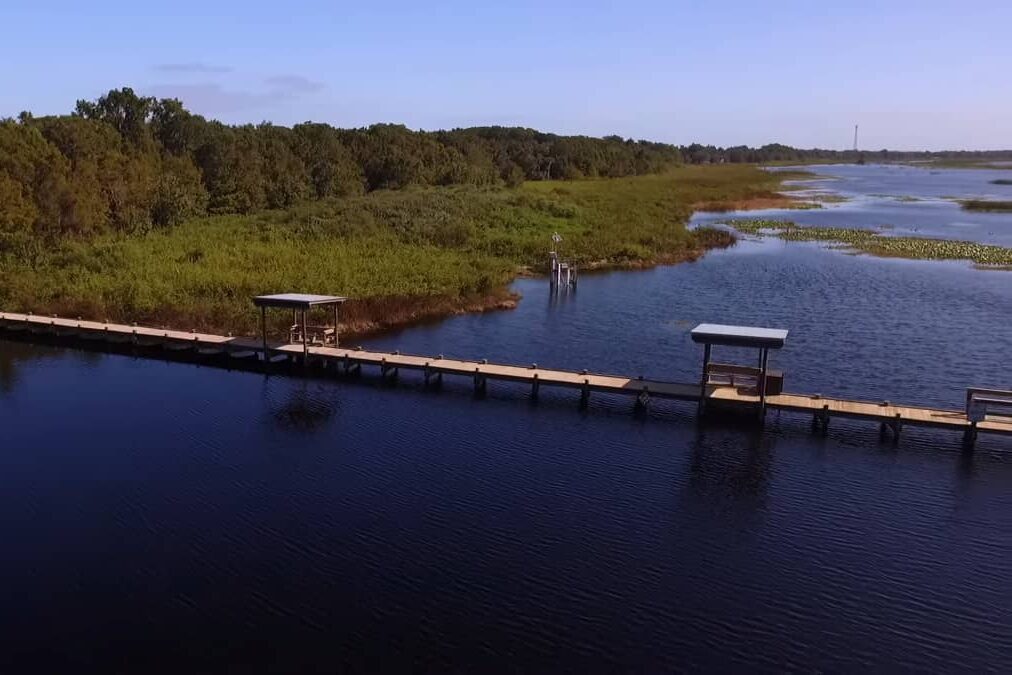
Description of the Lake: Lake Istokpoga, located in Highlands County, is esteemed by anglers for its high-quality bass fishing.
It stands as one of Florida’s largest lakes with its vast yet shallow waters. The lake’s shores are largely undeveloped, which helps to maintain its pristine natural appeal.
Swimming Conditions: The lake’s shallow nature, with much of the surrounding area being a floodplain, means it’s not commonly frequented for swimming. It is, however, an oasis for fishing enthusiasts and those who enjoy the quiet and calm of a less-developed lake environment.
Other Activities: Boasting an impressive array of fish, Lake Istokpoga is especially popular for bass fishing tournaments.
The surrounding area is also ideal for birdwatching and witnessing Florida’s stunning sunsets. Its diverse habitats host a variety of wildlife, making it an ideal spot for nature photography as well.
How to Get There: Lake Istokpoga is accessible via U.S. Highway 27 and State Highway 98. From Sebring, take U.S. Highway 27 north to Arbuckle Creek Road, turn right, and follow the signs leading to the public boat ramp and park facilities.
For those coming from the north, take U.S. Highway 27 south towards Sebring, turning onto Arbuckle Creek Road, which offers access to several points around the lake.
Conclusion
Each lake discussed in this guide is a world unto itself, where the bustle of beaches gives way to the lapping peace of inland waters. As you plan your next aquatic adventure, consider these seven Florida lakes, not just for their swimming but for the stories they tell and the tranquility they offer. With their warm waters and welcoming shores, they stand ready to transform any day into a treasure trove of memories.

